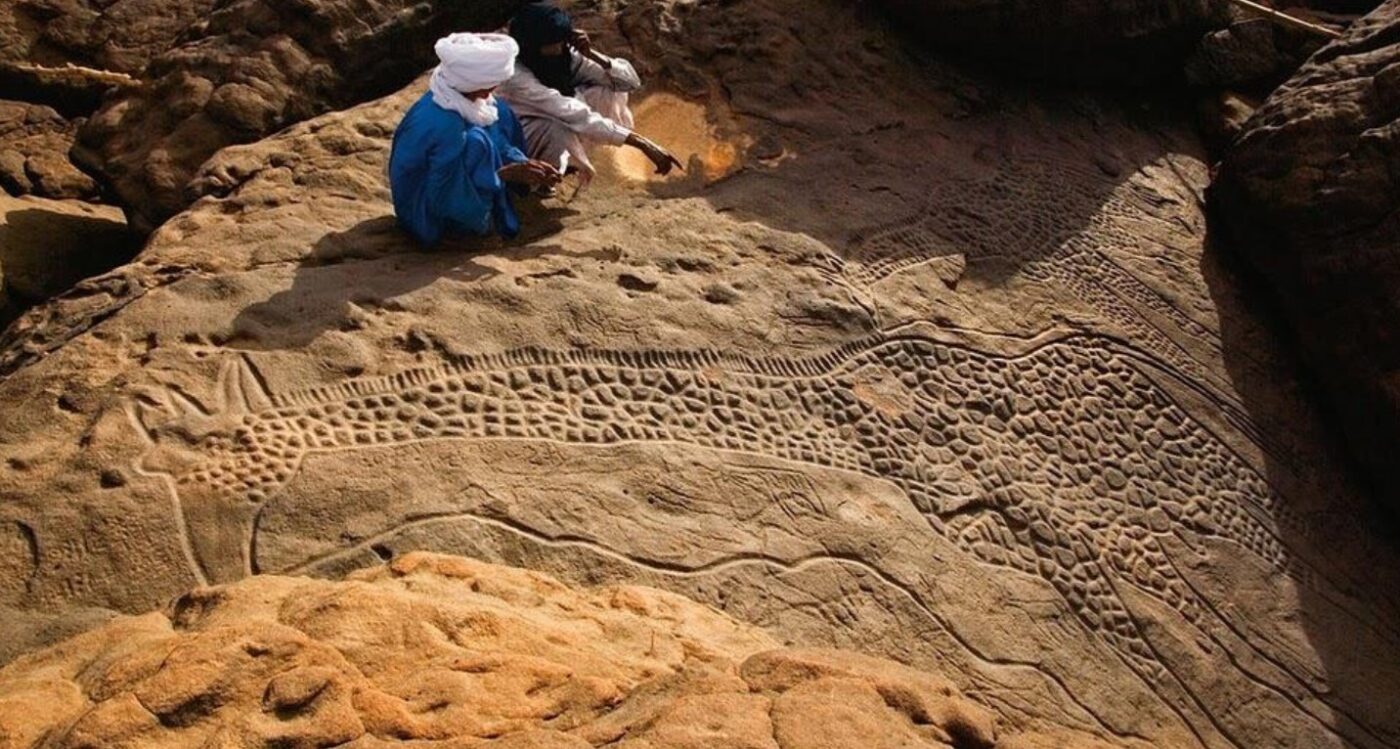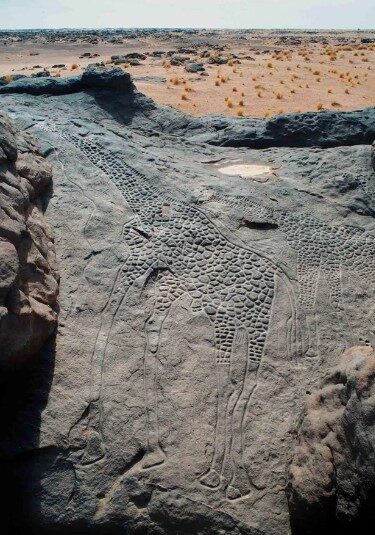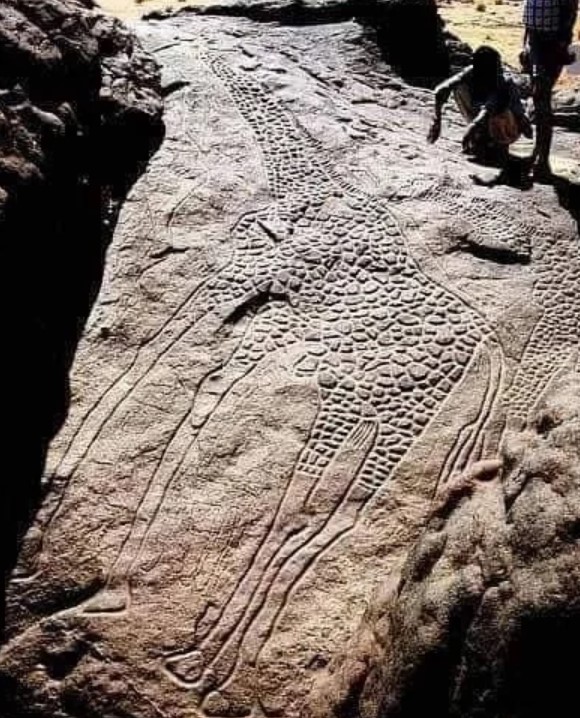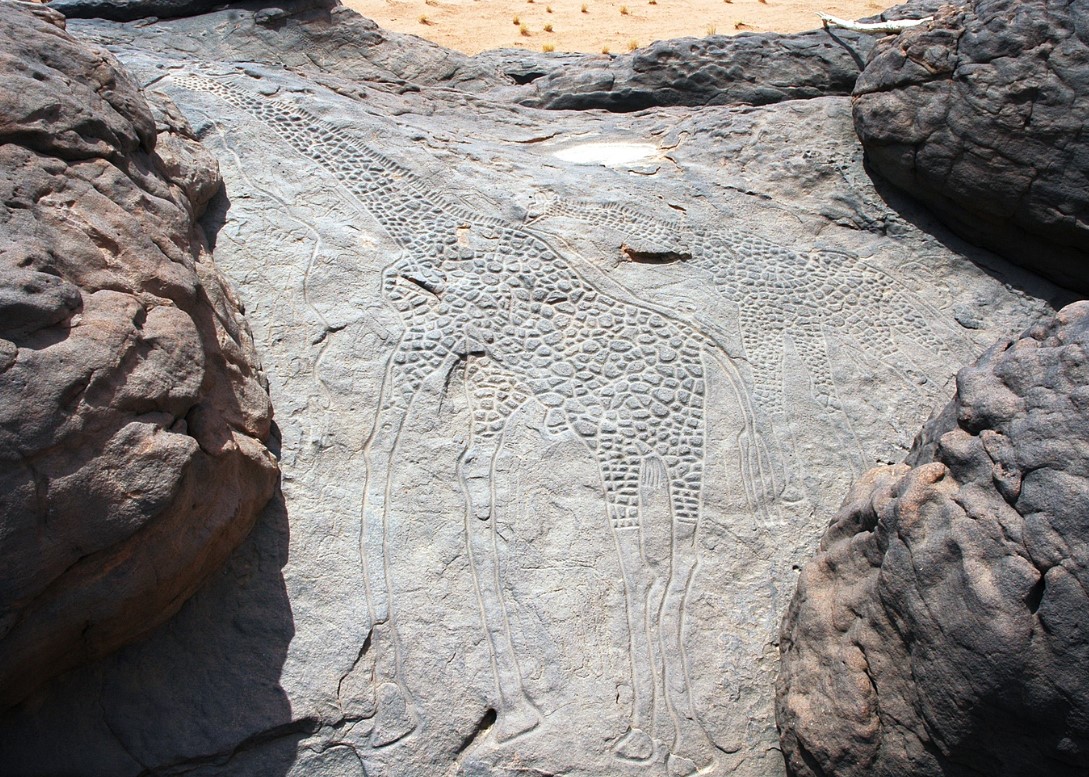over 9,000 years ago, when the Sahara was a lush savannah instead of a vast, barren desert, ancient artists created a masterpiece that continues to captivate the world today. Nestled in the rugged terrain of Niger’s Aïr Mountains, the Dabous giraffe carvings offer an extraordinary glimpse into a time when humans and nature lived in harmony. These carvings, featuring life-sized giraffes carved in stone, are more than just art—they’re a testament to human creativity and the Sahara’s once lush landscape.
Follow archeology.dulichvn.net to learn more about ancient times
The Discovery of the Dabous Giraffe Carvings
the story of the Dabous carvings begins with their rediscovery and their significance to the field of archaeology.

Uncovering Ancient Art
- the carvings were first brought to global attention in 1997 by French archaeologists Jean Clottes and Christian Dupuy
- located on a sandstone plateau in the Aïr Mountains, the site was remarkably well-preserved, protected by its remote location
- these petroglyphs are thought to date back over 9,000 years, during the Holocene epoch, when the Sahara was a green and fertile savanna
See more: Discover the Majestic Colomares Castle: A Hidden Gem in Spain
The Context of Their Creation
- the carvings belong to a period when early humans were transitioning from hunter-gatherers to pastoral societies
- the lush environment supported a wide variety of wildlife, including giraffes, elephants, and hippos, which played vital roles in daily life and cultural expression
- giraffes, in particular, held spiritual or symbolic significance, as suggested by their prominent depiction

What Makes the Dabous Carvings Unique
- the carvings are among the largest known prehistoric rock art pieces, with the larger giraffe measuring over 18 feet in length
- they feature intricate detailing, such as body patterns and anatomically accurate proportions, demonstrating the skill and care of their creators
- the presence of a human figure leading one giraffe suggests a symbolic relationship between humans and animals, possibly indicating domestication or ritual importance
See more: Exploring the Temple of Hathor in Dendera, Egypt
Decoding the Dabous Giraffes
understanding these carvings involves delving into their artistic, cultural, and historical significance.

Artistry in Stone
- the carvings were created using stone tools to etch into the sandstone surface, a process requiring incredible precision and effort
- the life-sized scale of the giraffes emphasizes their importance to the people who created them, possibly as revered symbols or spiritual icons
- the detailing in the carvings reflects not just artistic talent but also a deep familiarity with the animals
A Glimpse Into Prehistoric Life
- the depiction of a human figure with one giraffe hints at a complex relationship between people and their environment
- giraffes may have been seen as more than just sources of food—they could have been symbols of fertility, abundance, or connections to the divine
- the carvings also suggest that early humans celebrated their surroundings, immortalizing the animals that were integral to their lives
Cultural Significance
- the giraffes likely held spiritual or ritualistic importance, as seen in other African rock art of the time
- their presence in such a prominent location could have marked the site as a place of gathering or worship
- these carvings reflect a deep respect for nature, highlighting the harmony between humans and wildlife during this era
The Sahara’s Transformation and Its Impact
the Dabous carvings also serve as a poignant reminder of the Sahara’s dramatic environmental changes over millennia.

A Green Sahara
- during the Holocene Wet Phase, the Sahara was a thriving savanna, with rivers, lakes, and abundant vegetation
- this lush environment supported diverse ecosystems, allowing humans to flourish alongside wildlife
- the carvings reflect this harmonious coexistence, immortalizing a landscape that no longer exists
Environmental Shifts
- around 5,000 years ago, the Sahara began to dry out due to gradual changes in Earth’s orbit and climate
- this transformation forced human populations to migrate, leaving behind cultural markers like the Dabous giraffes
- as the desert expanded, it erased much of the evidence of earlier life, making the carvings even more significant
Preservation Amid Change
- the Dabous site stands as a rare, preserved window into this ancient world, surviving against the odds in an unforgiving environment
- these carvings underscore the importance of conservation efforts, ensuring they remain accessible to future generations
- their enduring presence reminds us of the resilience of human creativity and the power of nature to shape history
The Legacy of the Dabous Giraffe Carvings
the impact of the Dabous carvings extends far beyond their historical and cultural significance, inspiring awe and sparking conversations about heritage preservation.

Global Recognition
- the carvings are considered one of Africa’s most important examples of prehistoric rock art, drawing scholars and tourists alike
- they have been designated as a protected site under the Nigerien government and international cultural preservation efforts
- their discovery has helped to highlight the rich history of the Sahara, challenging perceptions of the desert as an eternal wasteland
Inspiration for Modern Art and Culture
- the giraffe carvings continue to inspire artists, archaeologists, and historians, serving as a link between past and present
- they have been featured in documentaries, exhibitions, and academic studies, emphasizing their global cultural importance
- their story encourages a deeper appreciation for humanity’s shared heritage and the need to preserve it
Conservation Challenges and Efforts
- the Dabous carvings face threats from natural erosion and human activity, necessitating urgent conservation measures
- organizations like the Trust for African Rock Art (TARA) work to document and protect such sites, ensuring their survival
- education and awareness campaigns aim to involve local communities in preserving this irreplaceable legacy
Conclusion
the Dabous giraffe carvings are not just relics of a bygone era—they are profound symbols of humanity’s connection to nature, creativity, and resilience. carved over 9,000 years ago in what was once a green and thriving Sahara, these life-sized depictions of giraffes capture a moment in time when humans lived in harmony with their environment.

CÁC TIN KHÁC
Mark Twain & Olivia Langdon: A 36-Year Love Story Filled with Laughter and Devotion
The Tollund Man: A 2,400-Year-Old Mystery Preserved in a Danish Bog
Skara Brae: Scotland’s Hidden Neolithic Village
Porta Nigra: The Hidden Depths of Trier’s Iconic Roman Gate